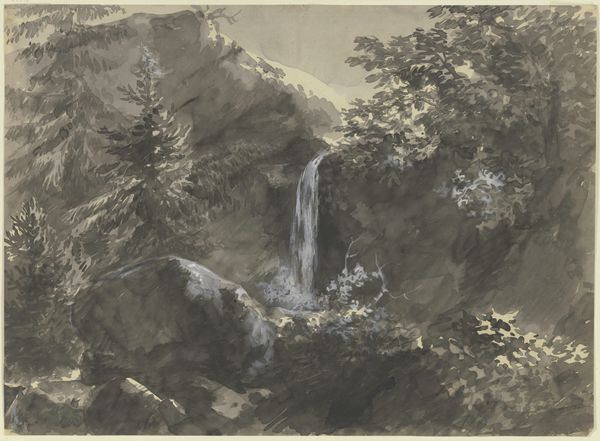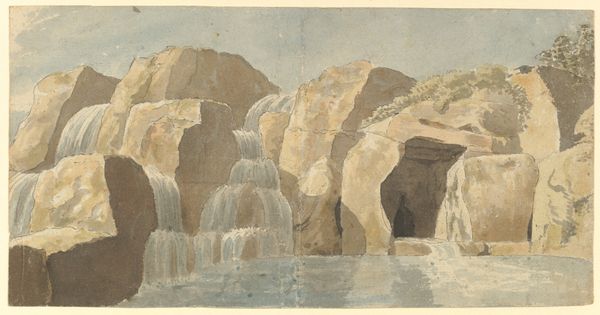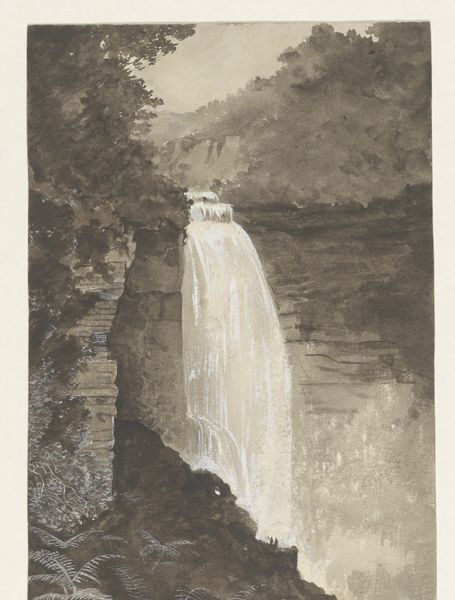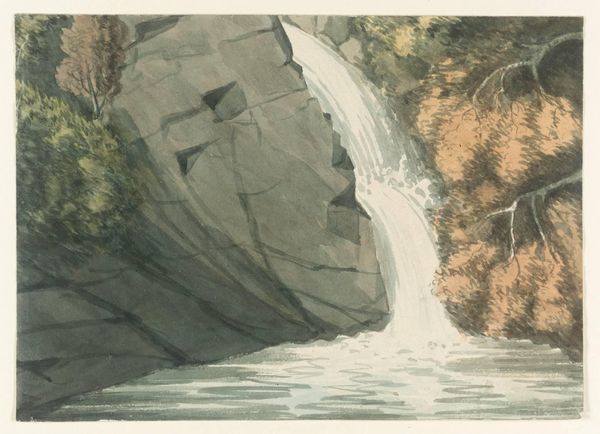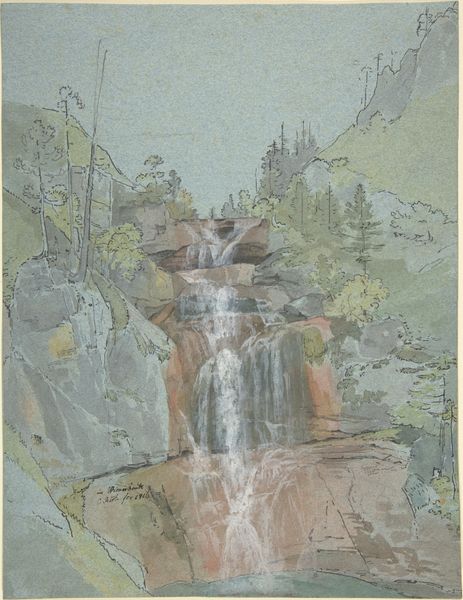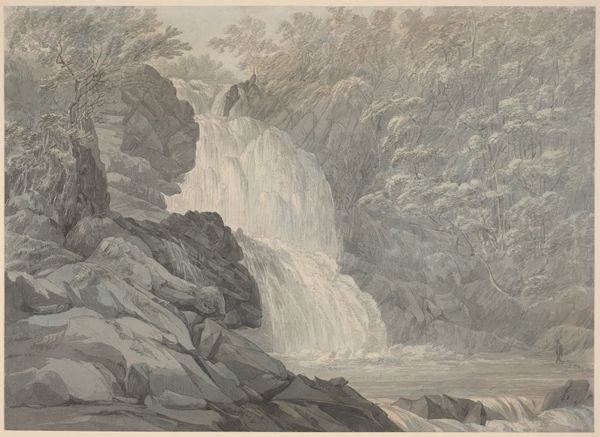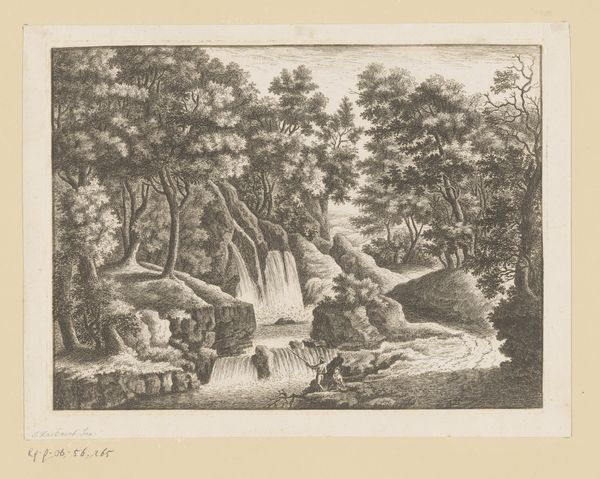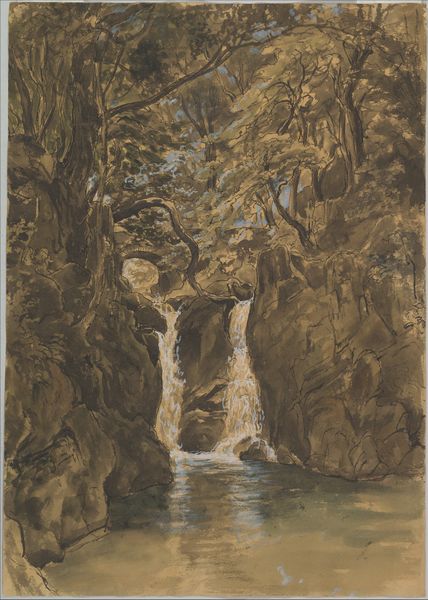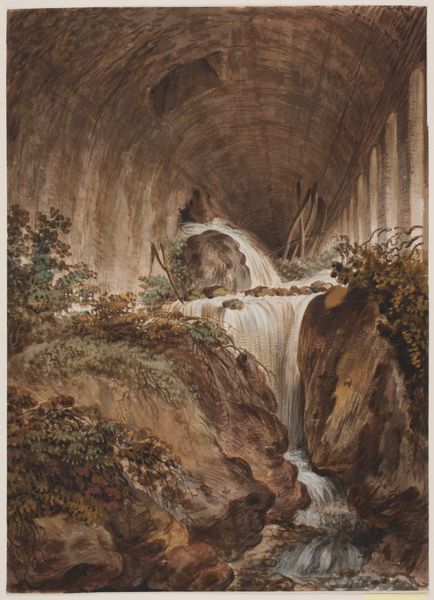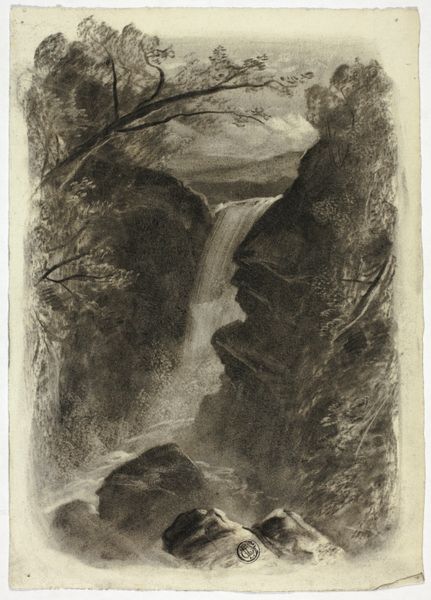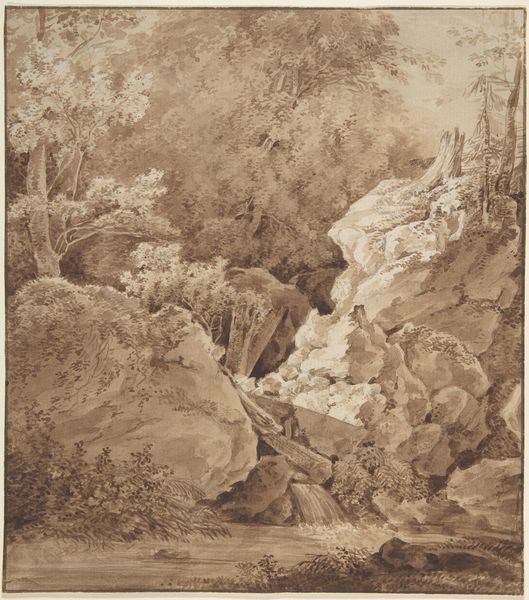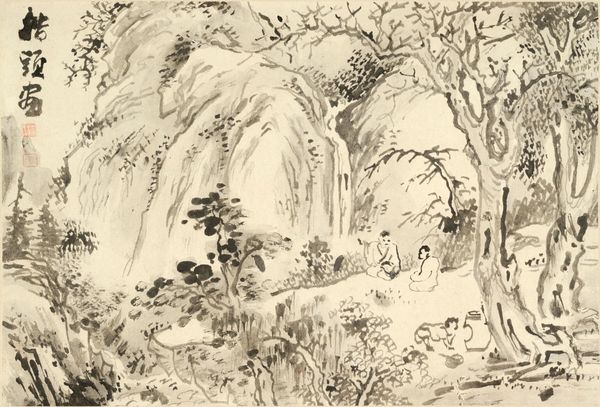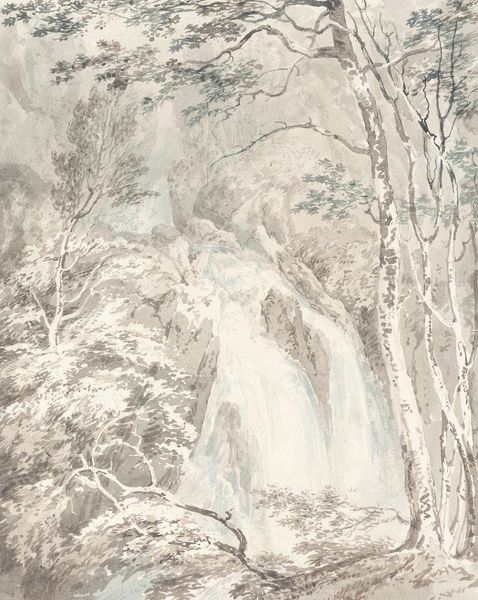
drawing, plein-air, watercolor, graphite
#
drawing
#
plein-air
#
landscape
#
watercolor
#
romanticism
#
graphite
#
watercolor
Copyright: Public Domain
Curator: Georg Melchior Kraus’ "Wasserfall im Stern zu Weimar," dating from around 1800 to 1806. It's currently residing here in the Städel Museum, and the work combines watercolor and graphite in a beautiful plein-air study. Editor: Wow, that's peaceful! The waterfall is really hypnotic, almost like looking into a dream. It is muted in its tones though, what did you say it was made of again? Curator: Indeed, it possesses that Romantic sensibility, almost a fairytale aura. He captured it en plein air. That is, in natural surroundings, outdoors! Using both watercolor and graphite. Editor: So, what stands out to me is how much light Kraus is able to achieve given the muted palette, especially in that fall. It almost feels… optimistic, against the ruggedness of the surrounding rocks. Do you see it that way too? Curator: I do! Consider the era and the evolving Romantic spirit. Waterfalls were powerfully symbolic—energy, change, the sublime force of nature… The way it contrasts to the rugged stone evokes this feeling of hope. It represents a dialogue between civilization and raw natural power. Editor: It's funny; that little touch of brightness sort of contradicts the somber expectations one might have about Romanticism. The setting seems so controlled too, unlike other, wilder portrayals. Curator: Perhaps the artist is making a statement about mankind's power, how the garden, including the waterfall, must be built or tended to. Editor: Ah, yes, there's something of the idyllic, an intentional framing perhaps? A sense that humanity, even back then, felt it could tame even a force as imposing as a waterfall. I like that juxtaposition. I almost feel like this single piece is something everyone should see and reflect on for themselves, regardless of background or interest. Curator: I agree. It bridges history with our present understanding, suggesting we consider ourselves not separate from, but very much a part of the ongoing cultural dialogue of hope.
Comments
No comments
Be the first to comment and join the conversation on the ultimate creative platform.
